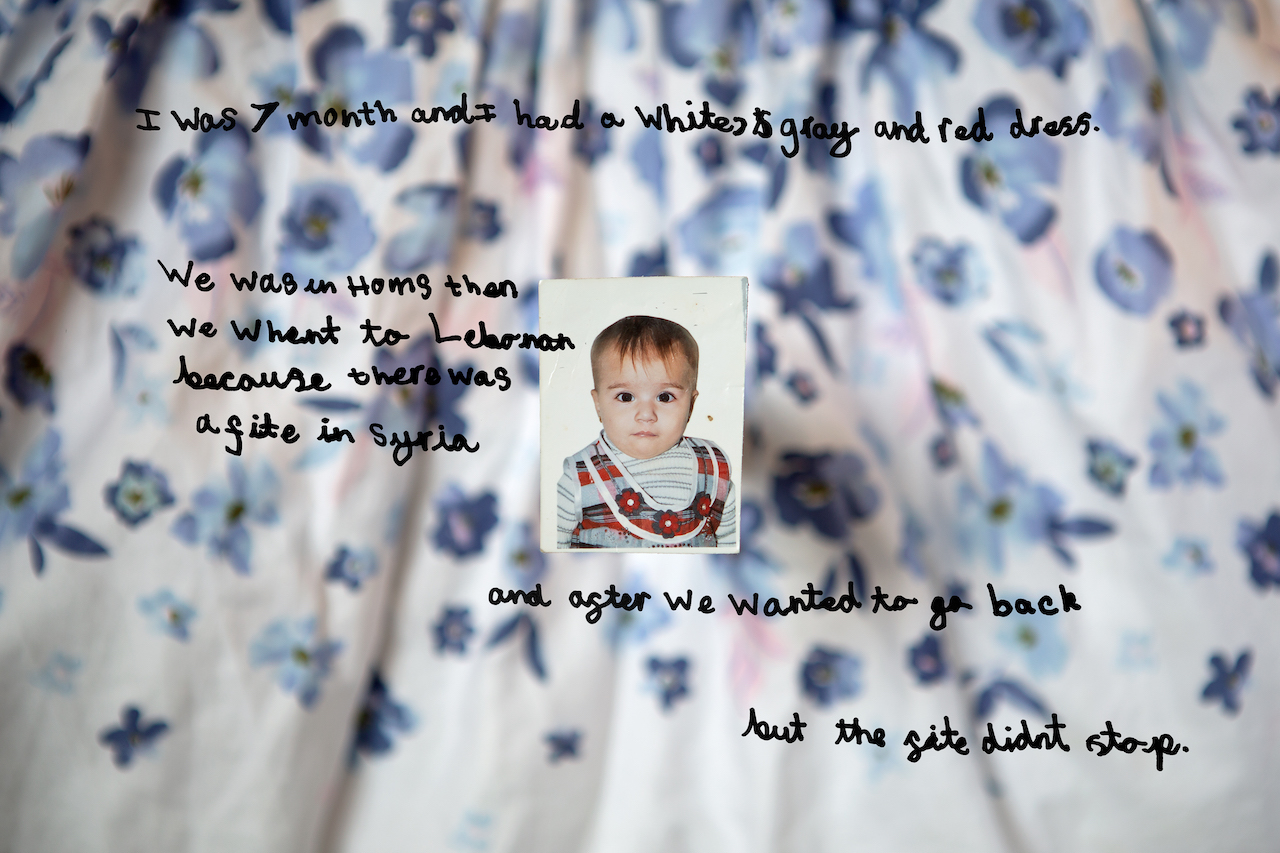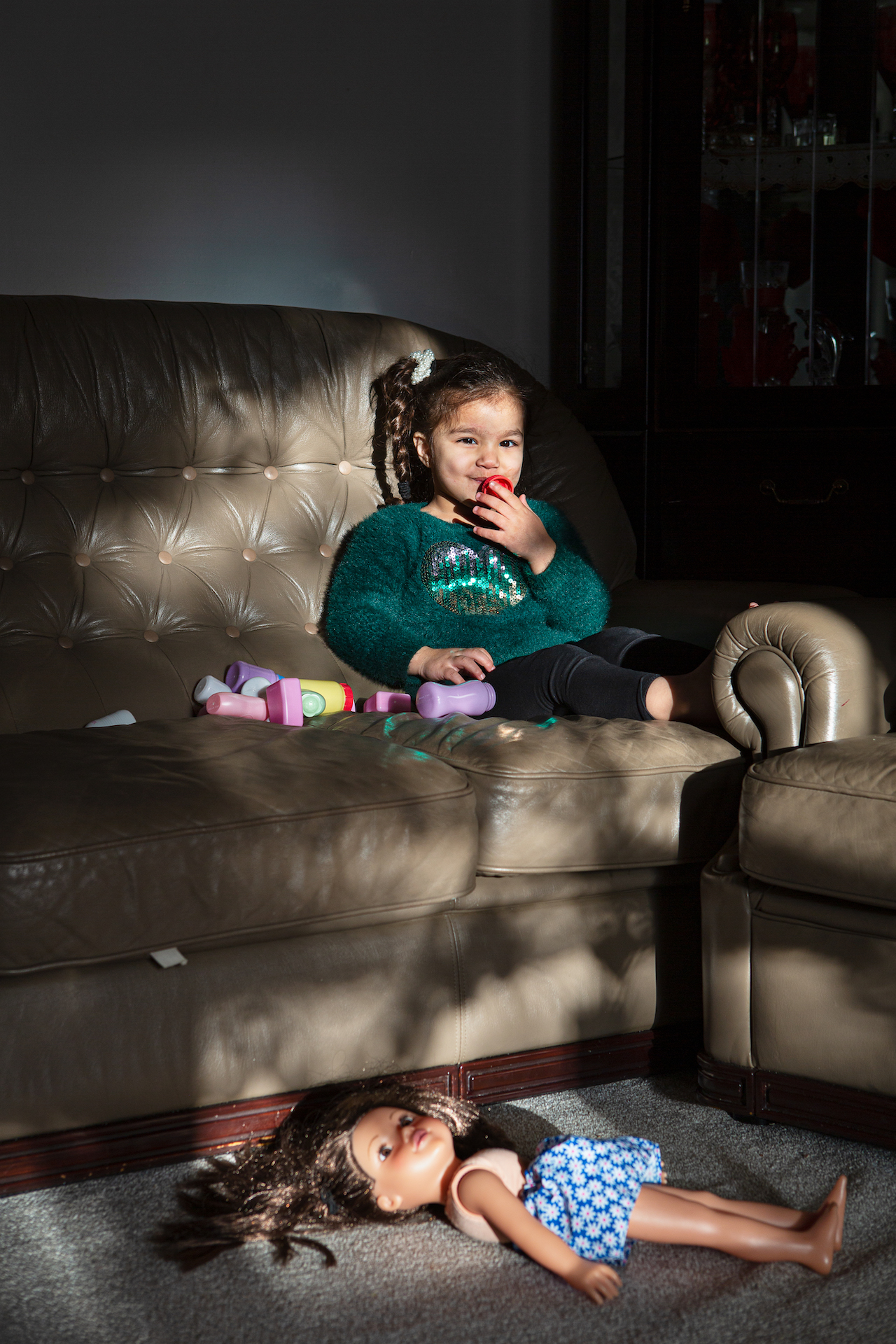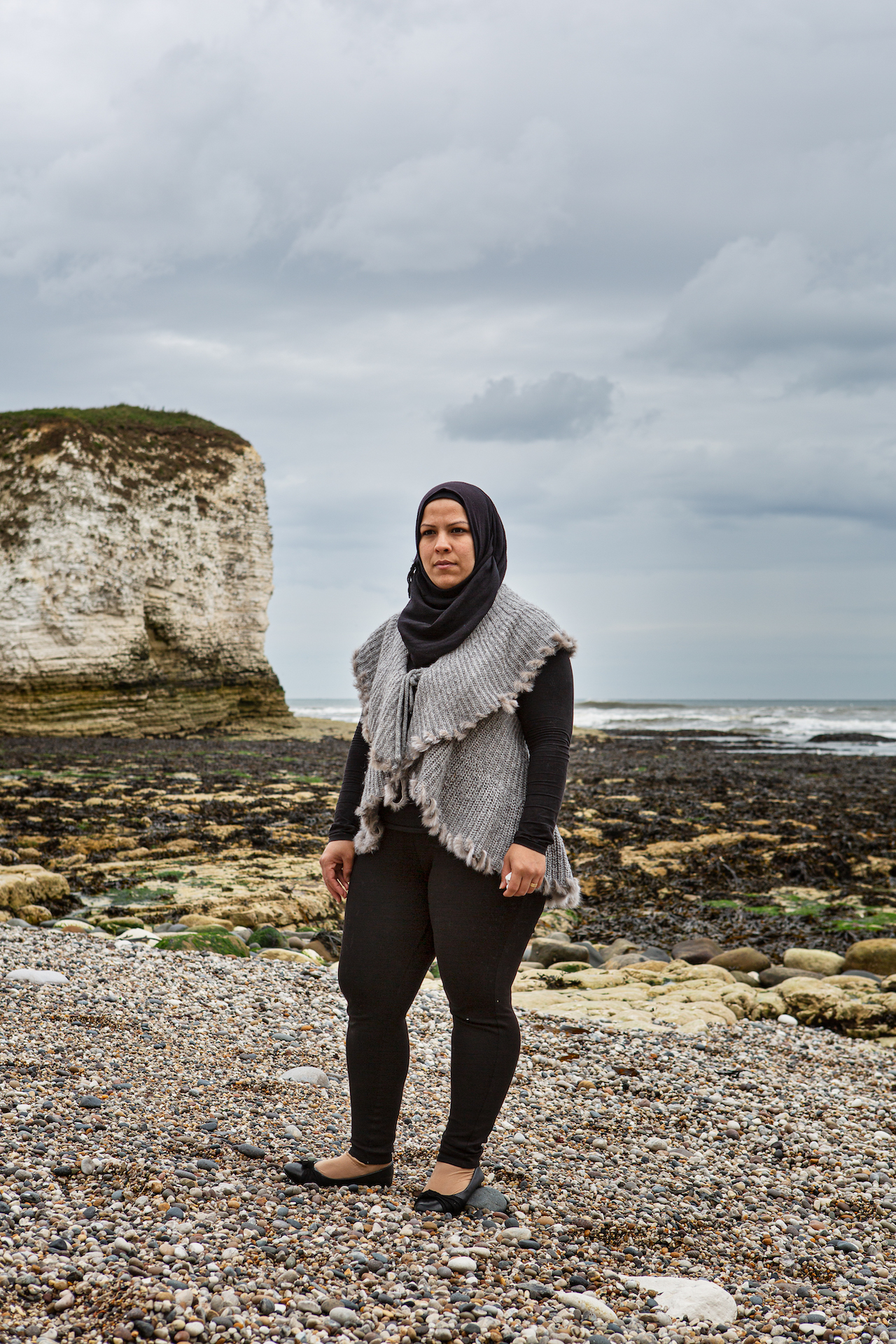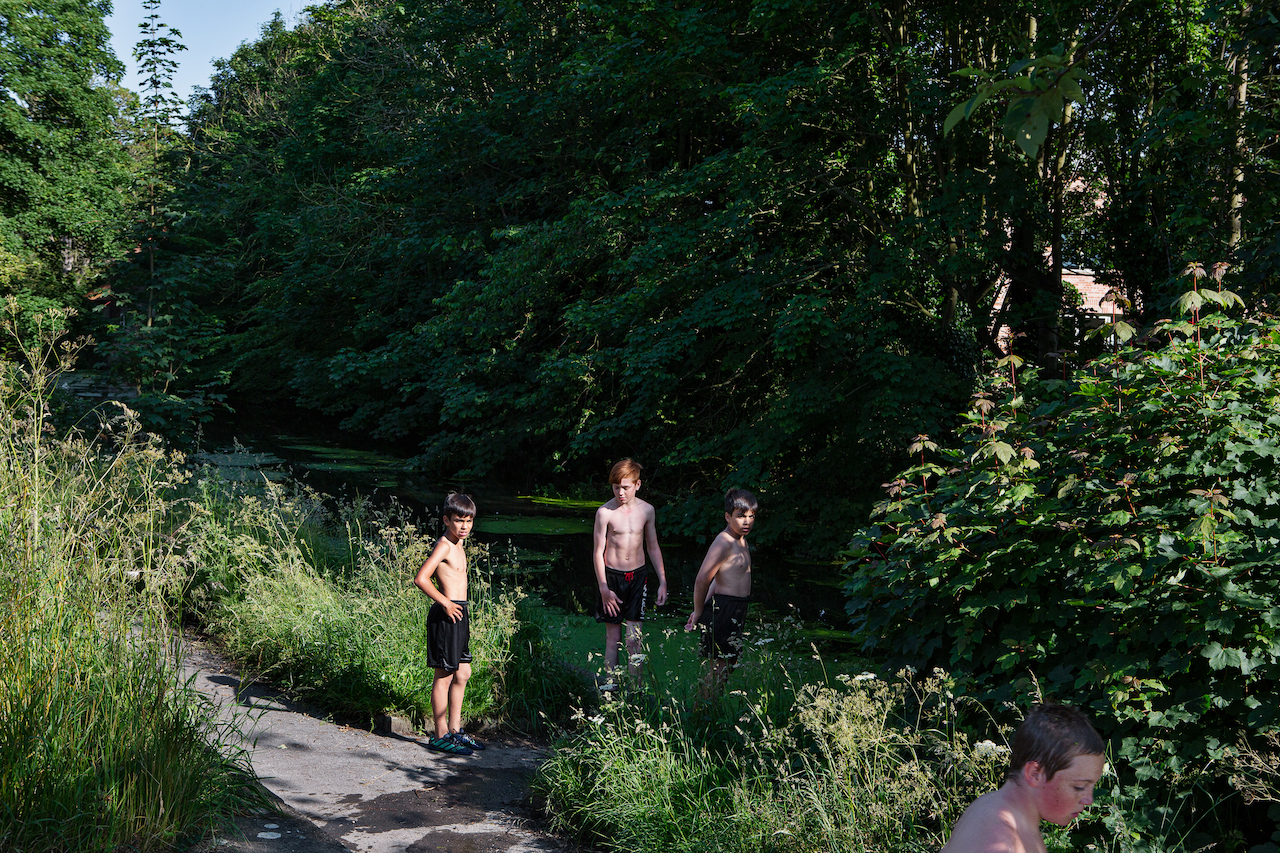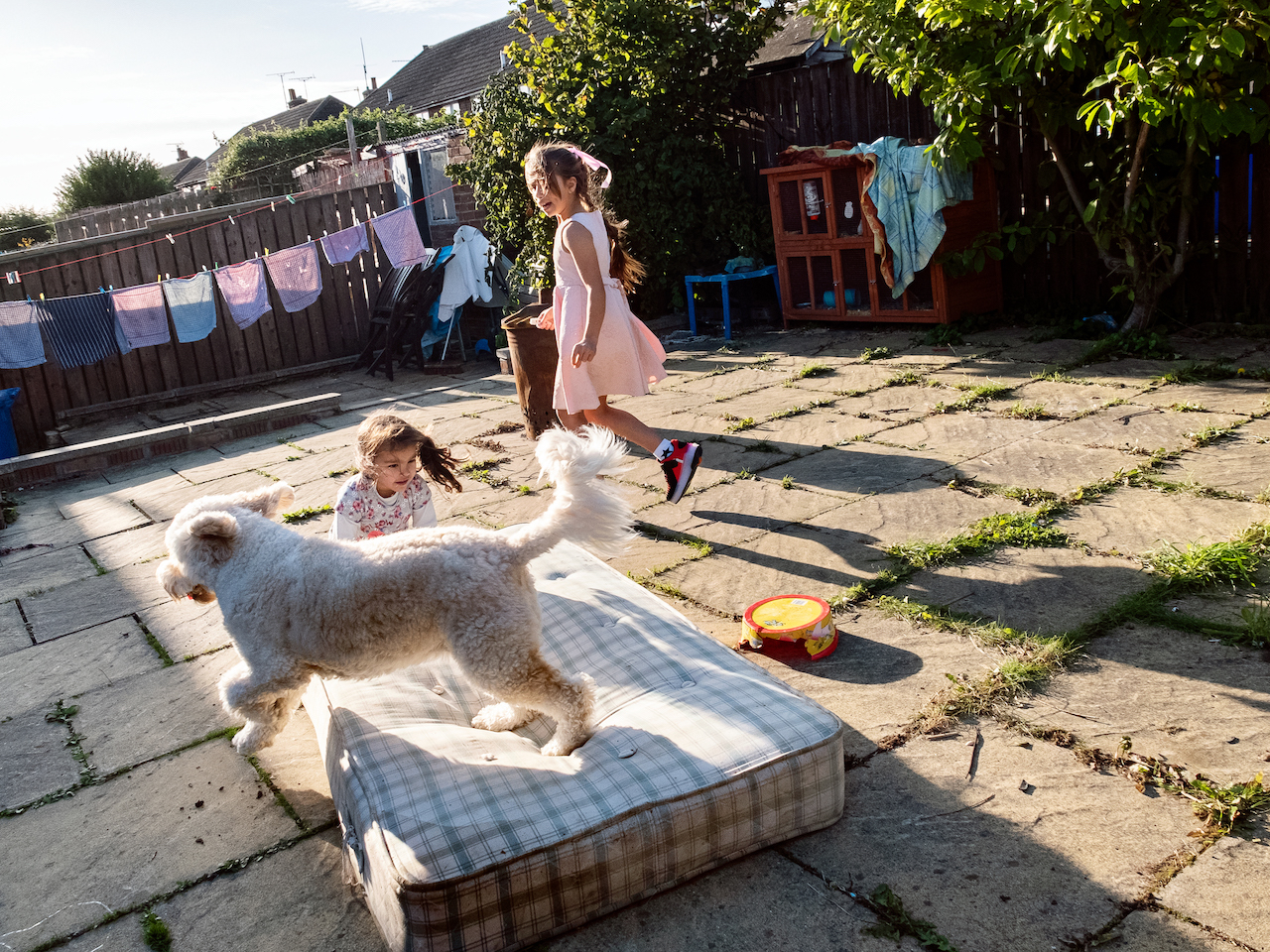Re-worked family archive photograph. © Rich Wiles/al-Hindawi family.
“At its heart, this exhibition is a story of family,” says Wiles. “Photography is not just a thing that is done by ‘photographers’. These pictures are part of their story.”
It has been a decade of tumultuous change for the al-Hindawi family. In 2011, father Rami and mother Ruba lived in Homs, Syria with their three children, Mustapha, Yazan and Hanan. The civil war had broken out that year, and the city was fast becoming a rebel stronghold. Rami worked as a driver, while Ruba was an assistant in a photo processing lab – but when armed forces laid siege to Homs, they had to get out.
Now the al-Hindawis live in Driffield, east Yorkshire, and they are about to put on an exhibition. In Which Language Do We Dream?, which opens at Bradford’s Impressions Gallery today, is put together by photographer Rich Wiles. The work documents Rami and Ruba’s new lives in the UK, where they arrived four years ago under a resettlement scheme, having initially fled to Lebanon in 2012.
“At its heart, this exhibition is a story of family,” says Wiles. In one photo, Mustapha and Yazan – the two boys – explore a sun-dappled Yorkshire canalside with a school friend. Another shows the fourth and youngest child, Rayan – who was born in the UK – sitting contently on the sofa, surrounded by her plastic toys. Compared to the upheaval that has marked the family’s recent history, the works are peaceful and contemplative – and that is the point.
“I don’t think this is the stereotypical way that we see refugees photographed, and I’m pleased about that,” Wiles says. “If you type ‘refugees’ into Google it will give you a series of images of people wearing orange life jackets coming across the Mediterranean. That is clearly a huge part of the broader story of displaced people… but I think it is also important to understand the longer context, and what happens afterwards.”
This attitude stems partly from Wiles’ own experience, of living and working in a refugee camp in Palestine for seven years. In 2015, he was shortlisted for the Sony World Photography Awards for a series exploring the Palestinian Circus School, a project that was established in 2006 to teach contemporary circus skills to young people across the West Bank.
“The media oversimplifies what it means to be somewhere like Palestine without ever really going any deeper,” he says. “Yes, things could be horrendous there. People die, land is colonised, houses are demolished. But there are also weddings, parties, circus schools, football games with the kids, laughter and jokes and all those other things. For me, because I invest a lot of myself into doing things, I try to go deeper and find out what else there is that people might not understand within a wider story.”
“Photography is not just a thing that is done by ‘photographers’. These family pictures are part of their story.”
The same is true of his project with the al-Hindawis, who he became close friends with as it progressed. “I am not a photojournalist, I don’t necessarily believe that I have to be detached from a story. In fact, it is probably the opposite of that,” he says. “It is clear that my relationship with Rami and Ruba has influenced the type of photographs that have gone into the exhibition.”
Indeed, many are taken by family members themselves. The girls play with a dog as the sun sets in a neighbour’s garden; the boys lie beneath a bed transfixed to a touchscreen tablet. Others date from their time in Syria. One is of Hanan, the older of the two girls, when she was still a baby. Her own, more recent, handwriting is overlaid: “We was in Homs then we whent to Lebonan because there was a fite in Syria and after we wanted to go back but the fire didn’t stop.”
“Photography is not just a thing that is done by ‘photographers’,” says Wiles. “These family pictures are part of their story. They have been sent to relatives overseas via Whatsapp, and are a vital way of communicating. They may not be purists’ photographs, and they may not be images that can be blown up printed huge on a gallery wall – but they do say something of the importance of photography.”
For the viewer, the family photos evoke an intimacy that is measured but nonetheless disarming. Wiles hopes they will prompt visitors to “just stop and think, and to form their own opinions about issues of displacement directly from people who have got lived experience of it”. Especially, he adds, after the febrile political atmosphere that has surrounded immigration in recent years. “I hope the family’s voices will directly emanate out through this work,” he adds. “For me, that is the most important thing.”
In Which Language Do We Dream? runs from 07 August to 13 November at Impressions Gallery, Bradford. The exhibition is a co-created project, bringing together a five-year photographic collaboration between Rich Wiles and the al-Hindawi family through discussions with curator Anne McNeill at Impressions Gallery.

